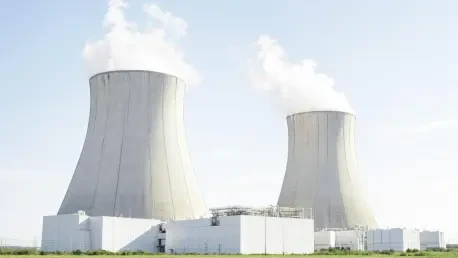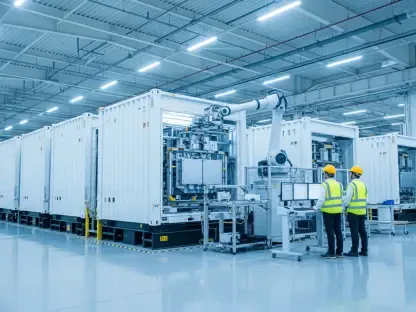The Inflation Reduction Act (IRA), passed in 2022 without Republican support, now stands at a critical juncture as Republicans control Congress and aim to slash spending by $2 trillion to enable substantial tax cuts totaling $4.5 trillion. The act, projected to cost between $780 billion and $2 trillion over its first decade, is marked for scrutiny during the budget reconciliation process, which is anticipated to be contentious. The stakes are high as legislators must weigh fiscal goals against preserving elements of the IRA deemed essential for the nation’s economic growth and energy strategy. This political battle involves key figures, like House Ways and Means Committee Chairman Jason Smith, who face mounting pressure to identify alternative revenue avenues to support these cuts and facilitate the ambitious fiscal plan laid out by Republicans.
Balancing the Budget and the IRA
Within the Republican ranks, the challenge of balancing hefty tax reductions with substantial budgetary cuts looms large. Key players, including Jason Smith, are tasked with dissecting the IRA for potential savings. However, resistance runs deep, as not all Republicans uniformly oppose the IRA. Some provisions have secured bipartisan favor, notably tax credits supporting the nuclear energy sector. A notable development emerged as 26 House Republicans signed a letter in March advocating for the preservation of specific nuclear energy tax credits under the IRA. These credits are perceived as pivotal for fostering energy innovation and maintaining federal investment in the crucial field of nuclear power. This outreach represents a critical attempt to reconcile differing priorities within the party as leaders like Smith navigate the complexities of congressional dynamics and fiscal responsibility.
The Role of Tax Credits
The IRA boasts significant tax credits that play a crucial role in promoting energy advancements and innovation. Credits associated with zero-emission nuclear power (45U) and technology-neutral incentives (45Y and 48E) are central to energy progress. These provisions enjoy bipartisan backing, underscored by figures like Rep. Julie Fedorchak, who actively champions them. Yet, Ryan Abraham, a principal at Ernst & Young, warns that elements such as direct pay and transferability are set to undergo rigorous examination. Alienating 26 Republican colleagues could complicate budgetary negotiations spearheaded by Smith. This illustrates the legislative tug-of-war as various factions within the Republican party grapple with delineating what aspects to protect versus the imperative of reducing expenditure to achieve substantial fiscal goals while ensuring strategic energy subsidies are preserved.
Electric Vehicle Credits and Legislative Strategy
Another potential flashpoint in budget deliberations surrounds the electric vehicle credits within the IRA. Although the exact details remain forthcoming until the bill is publicly unveiled, these credits are anticipated to attract significant focus from lawmakers. As budget negotiations unfold, Ryan Abraham reflects on potential strategies available to Jason Smith for navigating internal party dynamics. Enhancing the state and local tax deduction (SALT) cap emerges as a recurrent theme in discussions. Such adjustments could appease concerned members by offering concessions in policy areas less contentious than direct cuts to the IRA’s more popular provisions. This legislative balancing act underscores the broader negotiation and compromise processes as Republican leaders strive to harmonize the diverse interests within their ranks while pursuing aggressive fiscal targets.
Republican Lawmaker Perspectives
Debates over the IRA also reveal a broader acknowledgment among Republicans of its importance in job creation, economic investment, and advancing American energy independence, aligning with the party’s overarching economic agenda. This recognition manifests through various letters penned by Republican lawmakers requesting pragmatic revisions to the IRA. These communications illustrate a concerted effort to balance the party’s fiscal conservatism with the evident economic benefits derived from energy subsidies, critical in regions with high Republican support. The engagement of constituents in Republican districts becomes increasingly important, highlighting how these economic advantages transcend partisan divides, fostering a cooperative approach to refining the IRA amid fiscal debates while safeguarding vital subsidies for sectors pivotal to regional employment and economic growth.
Challenges from Former President Trump’s Budget Proposal
Former President Trump’s budget proposal introduced deep cuts to both the Department of Energy and the Infrastructure Investment and Jobs Act (IIJA), sparking fervent debate. Critics, like Harry Godfrey of Advanced Energy United, argue that the proposal prioritizes ideology over pragmatism. Despite these proposed reductions, the IIJA has historically garnered bipartisan backing focused on reinforcing America’s infrastructure, including crucial energy transportation elements. Trimming areas essential for bipartisan support risks misaligning congressional priorities with the administration’s fiscal direction. Godfrey cautions against undermining projects boasting strategic importance across party lines. This situation underscores the delicate intersection of fiscal conservatism and far-reaching infrastructural reforms with significant implications for energy innovation and bipartisanship.
The Political and Economic Implications
The narrative surrounding the IRA has profound implications not only in legislative terms but economically, especially concerning Republican districts where job creation and investments tied to the IRA have demonstrated clear benefits. Advocacy from Republican lawmakers reflects a nuanced appreciation of how the IRA’s energy innovations contribute to substantial economic progress. The interplay between fiscal restraint and strategic energy subsidies underscores a defining feature of the ongoing debate that will significantly shape the budget bill’s evolution. This legislative dance is poised to have noteworthy implications for energy policy, with its economic developments holding the potential to redefine how bipartisan approaches can achieve harmony between ambitious fiscal objectives and crucial energy advancements.









